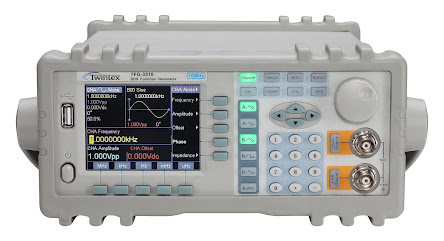Experiments BEC 251
Experiment 1
Obejctive:
Study of Lab Equipment and Components: DSO, Multimeter, and Function Generator, Power supply-Active, Passive Components and Bread Board.
Apparatus required:
DSO
Multimeter
Function Generator
Active Passive Components
Bread Board
Theory:
(DSO) Digital storage oscilloscope :
An electronic device that stores and analyses the signal in the digital format is known as Digital Storage Oscilloscope (DSO). When the input signal is given to the DSO, then it is processed, stored in the memory, and displayed on the screen. It stores the signal in the form of digital data as either 1 Or 0.
The advanced features of the DSO are triggering, storage and measurement. It can display the waveform or signal both numerically and visually. It is often referred to as the Digital Sampling Oscilloscope. Rather than using analog techniques, it used Digital Processing Techniques to capture, analyze, process, store, and display the signal on the screen.
MULTIMETER:
A Multimeter is used to measure many electrical quantities.
It can measure:
voltage (AC & DC),
current (AC & DC),
Resistance,
Capacitance,
frequency,
Continuity.
A multimeter is a voltmeter, ammeter & ohmmeter combined together.
POWER SUPPLY:
A power supply is an electrical device that supplies electric power to an electrical load. The primary function of a power supply is to convert electric current from a source to the correct voltage, current, and frequency to power the load.
Active and Passive Components:
Active Electronic Components :-
Active electronic components are those that can control the flow of electricity.
Different Types of Printed Circuit Boards have at least one active component.
Some examples of active electronic components are transistor, vacuum tubes, silicon-controlled rectifiers (SCRs).
Passive Electronic Components :-
Passive electronic components are those that don’t have the ability to control electric current by means of another electrical signal.
Examples of passive electronic components are capacitors, resistors, inductors, transformers, and some diodes. These can be either Thru-Hole of SMD Components.
Resistor :
A Resistor is an electrical device that resists the flow of electrical current. It is a passive device used to control, or impede the flow of, electric current in an electric circuit by providing resistance, thereby developing a drop in voltage across the device.
Capacitor :
A Capacitor is a passive electrical component that can store energy in the electric field between a pair of conductors called “plates”. The process of storing energy in the capacitor is known as “charging “. The ability of a capacitor to store charge is measured by its capacitance.
Capacitors are used in electronic circuits as energy storage devices. They are also be used to differentiate between high-frequency and low-frequency signals. A wide variety of capacitors are available, including electrolytic capacitors, basic parallel-plate capacitors, and mechanical variable capacitors.
Diode :
A diode is a one-way valve for electricity. Diodes allow flow of electricity in one direction. Most diodes have a painted line on one end showing the direction or flow. The negative side is normally white.
Integrated Circuit (IC):
Integrated Circuit (IC) are package of several complex circuits. IC's are available in a wide variety of packages and sizes. Their applications are as varied as their packages.
A transisitor is a semiconductor device. It is the fundamental building block of the circuitry in mobile phones, computers, and several other electronic devices. A transistor has very fast response and is used in a number of functions including voltage regulation, amplification, switching, signal modulation, and oscillators.
Transistors may be packaged individually or they can be a part of an integrated circuit. Some of the ICs have billion of transistors in a very small area.
Function Generator:
Function Generator is basically a signal generator that produces different types of waveforms at the output. It has the ability to produce waveforms such as sine wave, square wave, a triangular wave, sawtooth wave etc. An adjustable frequency range is provided by the function generator which is in the range of some Hz to several 100KHz.
A Breadboard is simply a board for prototyping or building circuits on.
It allows you to place components and connections on the board to make circuits without soldering.
The holes in the breadboard take care of your connections by physically holding onto parts or wires where you put them and electrically connecting them inside the board.
The ease of use and speed are great for learning and quick prototyping of simple circuits.
More complex circuits and high frequency circuits are less suited to breadboarding.
Breadboard circuits are also not ideal for long term use like circuits built on perfboard (protoboard) or PCB (printed circuit board), but they also don’t have the soldering (protoboard), or design and manufacturing costs (PCBs).
- Disconnect power before handling electronics.
- Always verify power circuit status before touching components.
- Replace fuses only after disconnecting power.
- Double-check work before reconnecting power.
- Maintain clean workspace; wear safety glasses for high-power circuits.










.jpeg)



0 comments:
Post a Comment